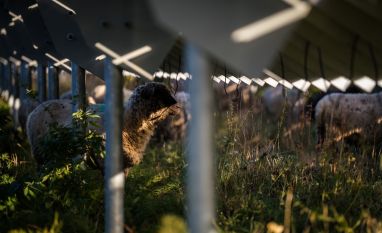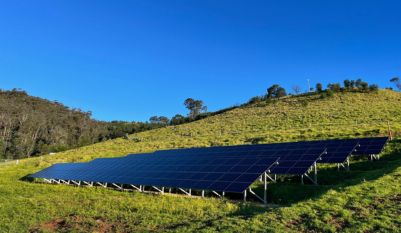Renewables on farm
Adding renewables can help keep down energy costs on-farm, improve the reliability of your electricity service, and reduce carbon emissions.
search for tools
Adding renewables can help keep down energy costs on-farm, improve the reliability of your electricity service, and reduce carbon emissions.
Adding renewables can help keep down energy costs on-farm, improve the reliability of your electricity service, and reduce carbon emissions. Government subsidies for solar installations have reduced costs and payback periods, encouraging large numbers of farmers to install solar.
Just like any investment, it’s important to be fully informed before installing an on-farm renewable energy system.
To learn how some farmers are using renewable energy on farm have a look through our Farming Forever Videos and Resource.


There are many options for traditional commodities to operate alongside solar farming, trials of horticultural produce being grown under specialised panels, as well as livestock grazing show the ability of farms to integrate renewable energy into their operation.
Many solutions are available to allow livestock to graze under solar panels, Cressbrook Station in Qld runs cattle under their 100kw of on farm solar.
While in Western NSW sheep grazing under solar has been extremely successful.
Agriculture Victoria has trialled a dual-purpose farm, with solar panels over a high density pear orchard near Tatura.
The first step when considering on-farm renewables is to make sure your business is already as energy-efficient as possible. By understanding and improving your efficiency, you can reduce the size of the system that you will need to install, saving money and shortening the payback period. To do this, you can commission an energy audit to be carried out by a professional to determine areas where you can make savings, or refer to online resources including:
| Resource |
|---|
| Queensland Ag Energy Hub Renewable and Efficiency Case Studies |
| Dairy Australia’s Energy Saving Tips |
| Australian Pork’s tips for Reducing energy costs on your piggery |
| MLA’s Feedlot Energy Efficiency and Cost Reduction |
| General advice provided by energy.gov.au |
Having more renewables in our national energy mix means we need to expand electricity transmission infrastructure. This much-needed infrastructure will need to be hosted on or near agricultural land, because these areas are both expansive and rich with resources for renewable electricity generation. For some farmers, this will represent an opportunity to diversify, secure, and grow farm income, providing a buffer against difficult farming years. For others, transmission infrastructure projects may present issues related to farm access and operation due to new easements or exclusion zones.
A good place to find information is the Understanding Australian Transmission Resource Hub, which contains factsheets and resources useful to farmers and communities.
FCA acknowledges that community consultation on transmission infrastructure to date has been divisive and generally sub-standard. We’ve been calling for better consultation to ensure that communities understand the impacts and opportunities of transmission infrastructure, can influence the location of new infrastructure, and that community benefits are meaningful and be shared across the region. We believe social licence is essential to ensuring transmission infrastructure projects can proceed.
FCA has created a number of webinars that you might find helpful. Explore our webinars below.
This toolkit isn’t exhaustive and FCA will be adding more resources over time – if you know of another great resource that should be added please send in your suggestions to info@farmersforclimateaction.org.au with subject “CSFT Suggestion”.
 Back to toolkit
Back to toolkit
Notifications